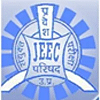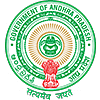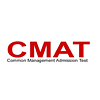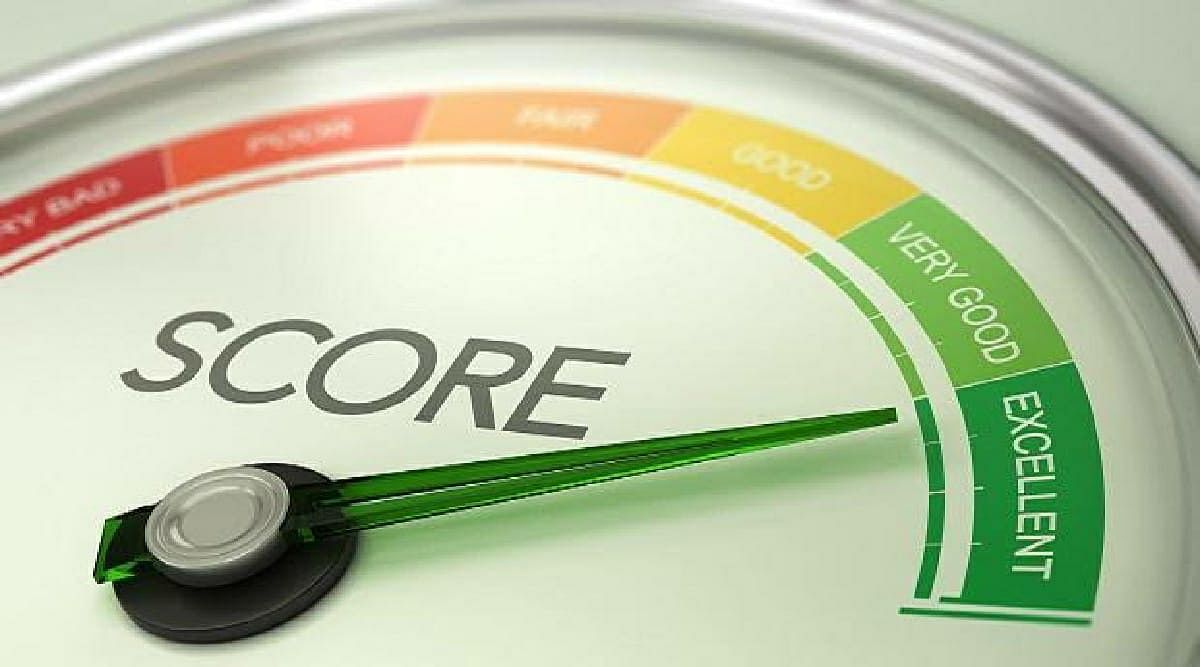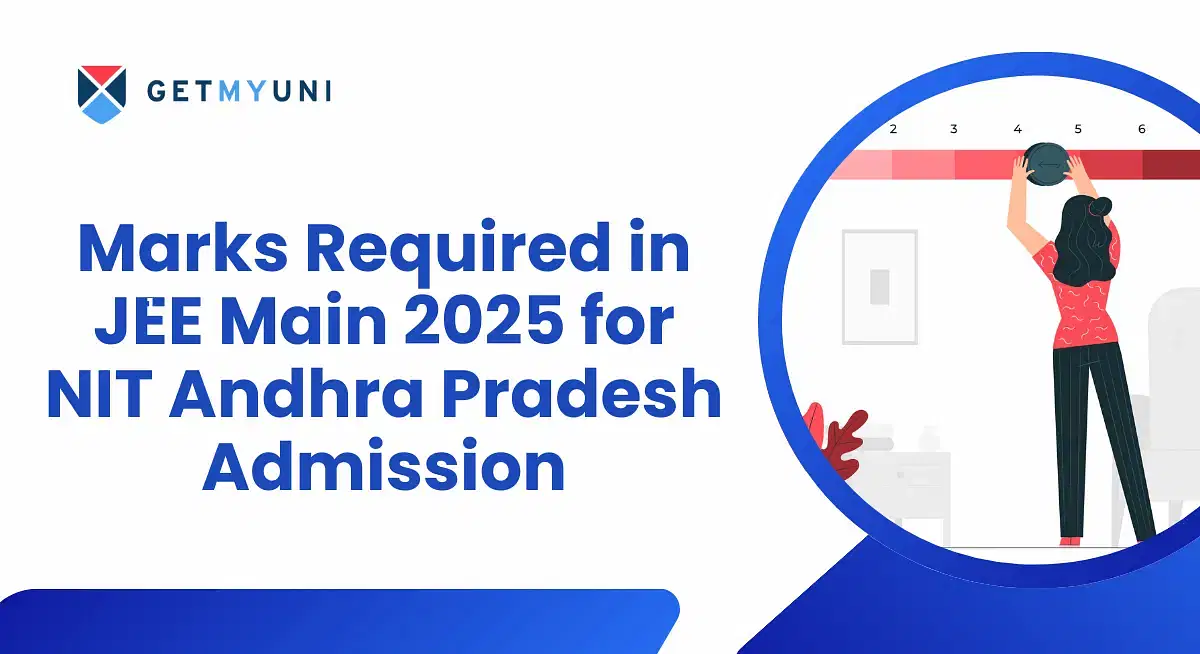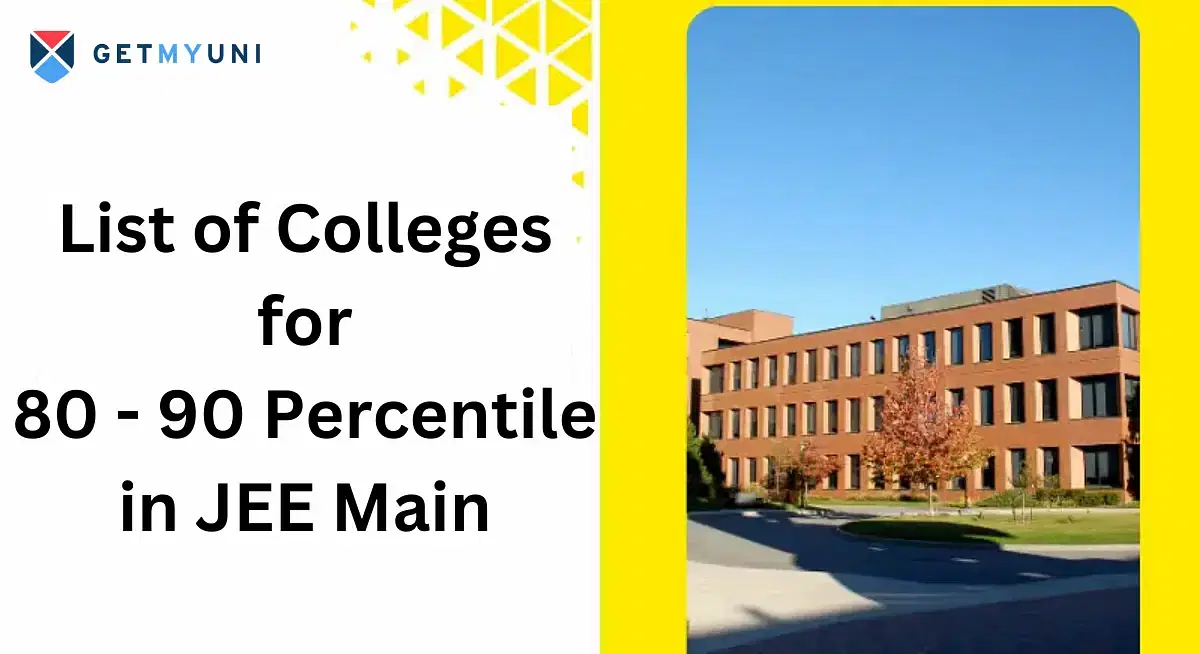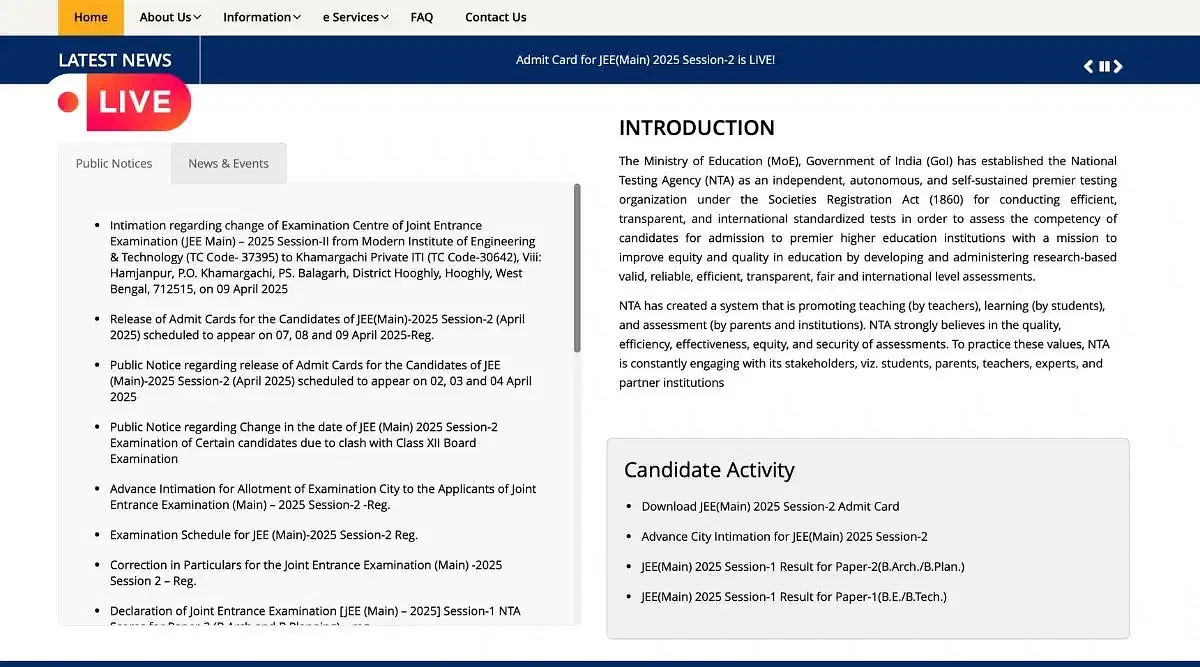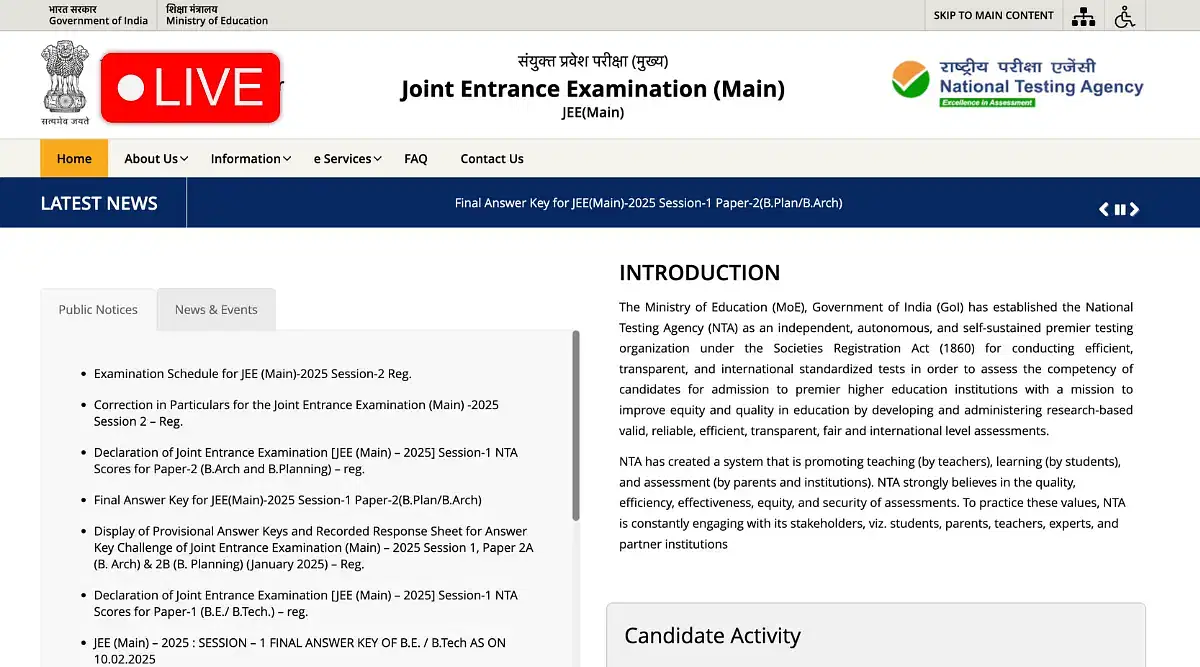
Table of Contents
JEE Mains Physics syllabus 2025 includes topics like Mechanics, Electrostatics and Magnetism, Optics and Modern Physics, among others. The entire Physics syllabus for JEE Mains 2025 is divided into two sections: A and B and it covers topics from classes 10 and 12.
Physics has a high weightage in the JEE Mains exam. Thus, a clear understanding of the JEE Mains Physics syllabus. This practice will help them learn each concept in detail and solve the JEE Mains Physics questions with ease.
JEE Mains Physics Syllabus 2025: Section Wise
The JEE Mains Physics syllabus 2025 is divided into two parts: Section A and Section B. Section A deals with the theory part, while Section B deals with experimental skills. Let’s look into the detailed syllabus:
JEE Mains Physics Syllabus: SECTION A
This part mostly deals with the theory. A proper understanding of each topic will give students clarity for the exam. The topics are outlined below, including the JEE Main Physics magnetic effects of current and magnetism:
Physics and Measurement
- Physics, Technology and Society
- SI units, Fundamental and Derived Units
- The least count, Accuracy, and Precision of measuring instruments
- Errors in measurement
- Dimensions of physical quantities
- Dimensional analysis and its applications
Kinematics
- Frame of reference
- Motion in a straight line: Position-time graph, speed and velocity
- Uniform and non-uniform motion, average speed and instantaneous velocity
- Uniformly accelerated motion, velocity-time, position-time graphs, relations for uniformly accelerated motion
- Scalars and Vectors
- Vector addition and Subtraction
- Zero Vector, Scalar and Vector products
- Unit Vector, Resolution of a Vector
- Relative Velocity, Motion in a plane, projectile motion, uniform circular motion
Laws of Motion
- Force and Inertia
- Newton’s First Law of Motion: Momentum
- Newton’s Second Law of Motion: Impulse
- Newton’s Third Law of motion, the Law of conservation of linear momentum and its applications, Equilibrium of concurrent forces
- Static and Kinetic friction, laws of friction, rolling friction
- Dynamics of uniform circular motion: Centripetal force and its applications
Work, Energy, and Power
- Work done by a constant force and a variable force, Kinetic and potential energies, work-energy theorem, power
- The potential energy of a spring, conservation of mechanical energy, conservative and non-conservative forces; Elastic and inelastic collisions in one and two dimensions
Rotational Motion
- Centre of mass of a two-particle system, the Centre of mass of a rigid body; Basic concepts of rotational motion; the moment of a force, torque, angular momentum, conservation of angular momentum and its applications; the moment of inertia, the radius of gyration
- Values of moments of inertia for simple geometrical objects, parallel and perpendicular axes theorems and their applications
- Rigid body rotation, equations of rotational motion
Gravitation
- The universal law of gravitation. Acceleration due to gravity and its variation with altitude and depth, Kepler’s laws of planetary motion
- Gravitational potential energy, gravitational potential. Escape velocity
- Orbital velocity of a satellite, geostationary satellites
Properties of Solids and Liquids
- Elastic behaviour, Stress-strain relationship, Hooke’s Law, Young’s modulus, bulk modulus, modulus of rigidity
- Pressure due to a fluid column, Pascal’s law and its applications
- Viscosity, Stokes’ law, terminal velocity, streamline and turbulent flow, Reynolds number
- Bernoulli’s principle and its applications. Surface energy and surface tension, angle of contact, application of surface tension - drops, bubbles and capillary rise. Heat, temperature, thermal expansion; specific heat capacity, calorimetry; change of state, latent heat. Heat transfer - conduction, convection and radiation, Newton’s law of cooling
Thermodynamics
- Thermal equilibrium, zeroth law of thermodynamics, the concept of temperature. Heat, work and internal energy
- The first law of thermodynamics
- The second law of thermodynamics: reversible and irreversible processes
- Carnot engine and its efficiency
Kinetic Theory of Gases
- Equation of state of a perfect gas, work done on compressing a gas
- Kinetic theory of gases-assumptions, the concept of pressure
- Kinetic energy and temperature: RMS speed of gas molecules
- Degrees of freedom, Law of equipartition of energy, applications to specific heat capacities of gases; Mean free path, Avogadro’s number
Oscillations and Waves
- Periodic motion – period, frequency, displacement as a function of time. Periodic functions. Simple harmonic motion (S.H.M.) and its equation; phase; oscillations of a spring -restoring force and force constant; energy in S.H.M. - Kinetic and potential energies; Simple pendulum - derivation of expression for its time period; Free, forced and damped oscillations, resonance
- Wave motion. Longitudinal and transverse waves, speed of a wave. Displacement relation for a progressive wave. Principle of superposition of waves, the reflection of waves, Standing waves in strings and organ pipes, fundamental mode and harmonics, Beats, Doppler effect in sound
Electrostatics
- Electric charges: Conservation of charge, Coulomb’s law-forces between two point charges, forces between multiple charges; superposition principle and continuous charge distribution
- Electric field: Electric field due to a point charge, Electric field lines, Electric dipole, Electric field due to a dipole, Torque on a dipole in a uniform electric field
- Electric flux, Gauss’s law and its applications to find field due to infinitely long uniformly charged straight wire, uniformly charged infinite plane sheet and uniformly charged thin spherical shell. Electric potential and its calculation for a point charge, electric dipole and system of charges; Equipotential surfaces, Electrical potential energy of a system of two point charges in an electrostatic field
- Conductors and insulators, Dielectrics and electric polarization, capacitor, a combination of capacitors in series and in parallel, the capacitance of a parallel plate capacitor with and without dielectric medium between the plates, Energy stored in a capacitor
Current Electricity
- Electric current, Drift velocity, Ohm’s law, Electrical resistance, Resistances of different materials, V-I characteristics of Ohmic and non-ohmic conductors, Electrical energy and power, Electrical resistivity, Colour code for resistors; Series and parallel combinations of resistors; Temperature dependence of resistance
- Electric Cell and its Internal resistance, potential difference and emf of a cell, a combination of cells in series and in parallel. Kirchhoff's laws and their applications. Wheatstone bridge, Metre bridge. Potentiometer - principle and its applications
Magnetic Effects of Current and Magnetism
- Biot - Savart law and its application to the current-carrying circular loop. Ampere’s law and its applications to infinitely long current carrying straight wire and solenoid. Force on a moving charge in uniform magnetic and electric fields. Cyclotron
- Force on a current-carrying conductor in a uniform magnetic field. The force between two parallel current-carrying conductors - definition of ampere, Torque experienced by a current loop in a uniform magnetic field; Moving coil galvanometer, its current sensitivity and conversion to ammeter and voltmeter
- Current loop as a magnetic dipole and its magnetic dipole moment. Bar magnet as an equivalent solenoid, magnetic field lines; Earth’s magnetic field and magnetic elements. Para-, dia- and ferromagnetic substances
- Magnetic susceptibility and permeability, Hysteresis, Electromagnets and permanent magnets
Electromagnetic Induction and Alternating Currents
- Electromagnetic induction; Faraday’s law, induced emf and current; Lenz’s Law, Eddy currents. Self and mutual inductance
- Alternating currents, peak and RMS value of alternating current/ voltage; reactance and impedance; LCR series circuit, resonance; Quality factor, power in AC circuits, wattles current. AC generator and transformer
Electromagnetic Waves
- Electromagnetic waves and their characteristics. The transverse nature of electromagnetic waves
- Electromagnetic spectrum (radio waves, microwaves, infrared, visible, ultraviolet, X-rays, gamma rays). Applications of e.m. waves
Optics
- Reflection and refraction of light at plane and spherical surfaces, mirror formula, Total internal reflection and its applications, Deviation and Dispersion of light by a prism, Lens Formula, Magnification, Power of a Lens, Combination of thin lenses in contact, Microscope and Astronomical Telescope (reflecting and refracting) and their magnifying powers
- Wave optics: wavefront and Huygens’ principle, Laws of reflection and refraction using Huygens principle. Interference, Young’s double-slit experiment and expression for fringe width, coherent sources and sustained interference of light. Diffraction due to a single slit, width of central maximum. Resolving power of microscopes and astronomical telescopes, Polarisation, plane polarized light; Brewster’s law, uses of plane-polarized light and Polaroids.
Dual Nature of Matter and Radiation
- Dual nature of radiation. Photoelectric effect, Hertz and Lenard’s observations; Einstein’s photoelectric equation; particle nature of light. Matter waves-wave nature of particles, de Broglie relation. Davis son-Germer experiment.
Atoms and Nuclei
- Alpha-particle scattering experiment; Rutherford’s model of atom; Bohr model, energy levels, hydrogen spectrum. Composition and size of nucleus, atomic masses, isotopes, isobars; isotones
- Radioactivity-alpha, beta and gamma particles/rays and their properties; radioactive decay law. Mass-energy relation, mass defect; binding energy per nucleon and its variation with mass number, nuclear fission and fusion.
Electronic Devices
- Semiconductors; semiconductor diode: I-V characteristics in forward and reverse bias; diode as a rectifier; 1-V characteristics of LED, photodiode, solar cell and Zener diode; Zener diode as a voltage regulator. Junction transistor, transistor action, characteristics of a transistor; transistor as an amplifier (common emitter configuration) and oscillator. Logic gates (OR, AND, NOT, NAND and NOR). Transistor as a switch.
Communication System
- Propagation of electromagnetic waves in the atmosphere; Sky and space wave propagation, Need for modulation, Amplitude and Frequency Modulation, Bandwidth of signals, Bandwidth of Transmission medium, Basic Elements of a Communication System (Block Diagram only).
JEE Mains Physics Syllabus: SECTION B
This section contains practical topics with a weightage of 20%. To achieve high scores, a rigorous practice of this part can prove beneficial. The topics covered are as follows:
- Vernier callipers: How they are used to measure the internal and external diameter and depth of a vessel.
- Screw gauge: How it is used to determine the thickness/diameter of thin sheet/wire.
- Simple Pendulum: dissipation of energy by plotting a graph between square of amplitude and time.
- Metre Scale: the mass of a given object by the principle of moments.
- Young’s modulus of elasticity of the material of a metallic wire.
- The surface tension of water by capillary rise and the effect of detergents.
- The coefficient of Viscosity of a given viscous liquid by measuring the terminal velocity of a given spherical body.
- Plotting a cooling curve for the relationship between the temperature of a hot body and time.
- The speed of sound in air at room temperature using a resonance tube.
- The specific heat capacity of a given: Solid, and liquid by method of mixtures.
- The resistivity of the material of a given wire using a meter bridge.
- The resistance of a given wire using Ohm’s law.
- Potentiometer:
- Comparison of emf of two primary cells
- Determination of the internal resistance of a cell.
- Resistance and figure of merit of a galvanometer by half deflection method.
- The focal length of:
- Convex mirror,
- Concave mirror,
- Convex lens (using the parallax method.
- The plot of the angle of deviation vs angle of incidence for a triangular prism.
- Refractive index of a glass slab using a travelling microscope.
- Characteristic curves of a p-n junction diode in forward and reverse bias.
- Characteristic curves of a Zener diode and finding reverse breakdown voltage.
- Characteristic curves of a transistor and finding current gain and voltage gain.
- Identification of Diode, LED, Transistor, IC, Resistor, and Capacitor from mixed collection of such items.
- Using the multimeter to:
- Identify the base of a transistor
- Distinguish between NPN and PNP type transistor
- See the unidirectional flow of current in the case of a diode and an LED
- Check the correctness or otherwise of a given electronic component (diode, transistor or IC).
JEE Mains 2025 Physics Chapter-wise Weightage
Understanding the JEE Mains physics chapter-wise weightage of each topic is necessary for better preparation. Therefore, let us now see physics weightage in JEE Mains and the number of questions:
| No. of Questions | Topics | Total Marks |
|---|---|---|
| 1 | Kinematics | 4 |
| 1 | Electromagnetic Induction and Alternating Currents | 4 |
| 1 | Simple Harmonic Motion | 4 |
| 1 | Centre Of Mass, Impulse and Momentum | 4 |
| 1 | Oscillations and Waves | 4 |
| 1 | Work, Power and Energy | 4 |
| 1 | Properties of Solids and Liquids | 4 |
| 1 | Gravitation | 4 |
| 1 | Unit, Dimension and Vector | 4 |
| 1 | Laws of motion | 4 |
| 5 | Modern Physics | 20 |
| 2 | Magnetic Effects of Current and Magnetism | 8 |
| 3 | Heat and Thermodynamics | 12 |
| 3 | Optics | 12 |
| 3 | Current Electricity | 12 |
JEE Mains 2025 Physics Recommended Preparation Books
There are various books available in the market to prepare for the JEE Mains Physics syllabus 2025. Here is the list of best Physics books for JEE Mains:
| Books | Author |
|---|---|
| Concepts of Physics Vol I and II | H.C. Verma |
| Problems in Physics | S.S. Krotov |
| Problems in General Physics | I.E. Irodov |
| Understanding Physics by D C Pandey:
Electricity & Magnetism Mechanics (Vol. 1 & 2) Optics & Modern Physics Waves & Thermodynamics |
Arihant Publications |
| Feynman Lectures on Physics | R.P. Feynman |
| Fundamental of Physics | Resnick, Halliday, and Walker |
| Concepts of Modern Physics | Arthur Beiser, Shobhit Mahajan, S. Rai Choudhury |
JEE Mains 2025 Physics Preparation Tips
JEE Mains Physics syllabus 2025 plays a major role in the results. The scope of scoring marks in physics is high and it can improve the rank of students.
Learning about the syllabus can additionally create a chance for students to qualify for JEE Advanced. Mentioned below are a few tips that can enhance aspirants' chances of getting the qualifying rank:
- Knowing the JEE Mains Physics syllabus 2025 is a very important factor, for which we have provided candidates with a thorough chapter-wise analysis.
- Segregate the topics in each subject into class 11 and class 12 to allow for common preparation for both board and entrance exams.
- Make notes of important topics from the JEE Main physics book, and revise them at regular intervals.
- Adopt a holistic method of following a routine, and solve previous years' question papers.
- Follow the above-mentioned books for a clear concept and understanding.
- Make a chart of the important formulas.
- Make a habit of solving questions within the time frame.
- Read the question paper carefully before jumping to an answer; if there is any doubt, take a little time to understand and then attempt the question.
FAQs on JEE Main Physics
Q: Will the syllabus for JEE 2025 change?
Q: What are the deleted chapters from JEE Main Physics syllabus 2025?
Q: Who is eligible for JEE 2025?
Q: Can I crack JEE Main in 1 year without preparation?
Q: Is IIT tougher than CA?



